Categories:
When discussing the various types of AR-15 front sights, it is essential to recognize the diversity and functionality that each type brings to the gun. Front sights for the AR-15 can be broadly categorized based on their mounting locations, adjustability, and design features, each catering to different shooting needs and preferences.
One prominent type of front sight is the fixed front sight. This traditional design is often integral to classic AR-15 models and is typically mounted directly onto the barrel or gas block. Fixed front sights are known for their durability and reliability; they remain in place regardless of rough handling or adverse conditions. These sights are usually part of a fixed iron sight system, paired with a corresponding rear sight that provides a consistent aiming reference point.
Another notable category is flip-up or folding front sights. These versatile devices are particularly favored by shooters who use optics but still want reliable backup iron sights (BUIS). Flip-up sights can be mounted on the barrel or more commonly on the handguard’s Picatinny rail system. When not in use, they can be folded down to avoid obstructing optics or other attachments.
They can quickly be deployed when needed, offering an immediate aiming solution if electronic optics fail.
Adjustable front sights represent another significant variation within this category. Unlike fixed models, adjustable front sights allow shooters to fine-tune elevation settings for precise targeting at various distances. This adjustability ensures greater accuracy and adaptability in diverse shooting scenarios.
Additionally, some modern designs incorporate fiber optic or tritium inserts into their construction. Fiber optic inserts gather ambient light to provide a bright aiming point during daylight hours while tritium inserts offer low-light visibility without relying on external power sources. These enhancements make target acquisition faster and easier under varying lighting conditions.
In summary, AR-15 front sights encompass a range of designs tailored to meet different operational requirements and personal preferences. Whether opting for fixed robustness, flip-up versatility, adjustable precision, or enhanced visibility through fiber optics or tritium inserts—each type offers unique advantages that contribute significantly to effective marksmanship with an AR-15 platform.
The front sight on an AR-15, whether mounted on the barrel or handguard, offers a multitude of benefits that enhance both the functionality and accuracy of the gun. While modern optics have gained popularity, the traditional front sight remains an invaluable asset for various shooting scenarios.
Firstly, a front sight provides a reliable and straightforward aiming solution. Unlike electronic optics that depend on batteries and can be prone to technical failures, a fixed front sight is always operational. This reliability is crucial in high-stakes situations where equipment failure is not an option.
Furthermore, using a front sight helps shooters develop fundamental marksmanship skills. It forces them to focus on proper alignment and trigger control without relying on advanced technology to compensate for poor technique. Mastering these basics with iron sights can make transitioning to more sophisticated optics easier and more effective.
Another key advantage is co-witnessing capability. Many shooters prefer a setup where their optic aligns perfectly with their iron sights, known as co-witnessing. This configuration ensures that if the optic fails or becomes damaged, the shooter can instantly revert to using the iron sights without losing zero or having to adjust their aim significantly.
Moreover, a fixed front sight serves as an excellent reference point for rapid target acquisition. In dynamic shooting environments such as competitive matches or defensive situations, quickly acquiring your target can make all the difference. The consistency of knowing exactly where your front sight will be positioned allows for faster and more instinctive shooting.
The durability of fixed iron sights also cannot be overstated. Constructed from robust materials like steel or aluminum, they are designed to withstand harsh conditions and physical impacts that might render other aiming devices useless.
In conclusion, incorporating a front sight into your AR-15 setup offers reliability, skill development opportunities, co-witnessing benefits, rapid target acquisition capabilities, and unmatched durability. While modern optics have their place in today’s shooting landscape, the humble front sight continues to hold its ground as an essential component for any well-rounded shooter.
Mounting an AR-15 front sight on the barrel is a crucial task for ensuring accuracy and reliability in your shooting experience. Although it may seem complex, following a systematic approach can simplify the process. Here’s a comprehensive guide to help you mount an AR-15 front sight effectively.
First, ensure that you have all necessary tools at hand: a quality front sight assembly, appropriate wrenches or screwdrivers, thread-locking compound, and possibly some alignment tools. Safety should be your priority; make sure your gun is unloaded and the workspace is secure.
Begin by identifying the type of front sight compatible with your barrel. There are two primary types: fixed A2-style sights and flip-up sights. Fixed sights are more traditional and often sturdier, while flip-up sights offer flexibility for use with optics.
For fixed sights, position the front sight base over the gas block journal on your barrel if it’s pre-drilled for taper pins. Align it carefully so that the holes match up precisely. Insert taper pins from right to left using a non-marring punch to avoid damaging the finish of your rifle.
If you’re using set-screw or clamp-on models instead of taper-pin types, align them similarly but secure them by tightening screws or clamps evenly to ensure they don’t shift during use.
Flip-up sights usually require mounting directly onto a flat top gas block or handguard rail system rather than directly on the barrel itself. For these models, slide them into place on the rail ensuring they’re positioned at standard height relative to rear iron sights or optics for co-witnessing capabilities.
Regardless of sight type, apply thread-locking compound to screws or pins if recommended by manufacturers to prevent loosening due to recoil vibrations over time.
Finally, verify proper alignment by bore-sighting your rifle and making any necessary adjustments before zeroing in at the range. Properly mounted front sights will significantly enhance shooting precision and overall gun performance.
When it comes to mounting an AR-15 front sight on the handguard, precision and stability are key. Unlike traditional barrel-mounted sights, handguard-mounted sights provide versatility and can be particularly advantageous for those who prefer free-floating barrels. This method ensures that the barrel’s harmonics remain unaffected, thereby maintaining accuracy.
To begin with, selecting the right front sight is crucial. Make sure to choose a sight compatible with your specific handguard system. Most modern AR-15s feature either M-LOK or KeyMod handguards, though some still use Picatinny rails. Each of these systems requires a corresponding type of mounting hardware.
Start by ensuring that your rifle is unloaded and safe to handle. Safety should always be the first priority when working with guns. Once you’ve confirmed this, position your rifle securely using a gun vice or similar stabilizing tool.
Identify the optimal position for your front sight along the handguard. This will typically be near the end of the guard but should align perfectly with your rear sight or optics for accurate aiming. Mark this spot lightly to guide your installation process.
Next, align the base of your front sight with this marked location on your handguard rail system. If you are using an M-LOK or KeyMod system, attach any necessary adapters or mounts first before securing the sight itself. For Picatinny rails, simply slide the sight into place and ensure it fits snugly.
Once aligned correctly, tighten all screws securely but avoid over-tightening as this could strip threads or damage components. Use a torque wrench if available to apply consistent pressure according to manufacturer specifications.
After mounting, it’s essential to test and calibrate your new front sight at a range. Fire several rounds downrange while adjusting windage and elevation settings until you’re satisfied with its accuracy.
Remember that consistent maintenance is vital; periodically check that all screws remain tight and components are in good condition through regular inspections post-use.
Mounting an AR-15 front sight on a handguard may seem straightforward but requires meticulous attention to detail for optimal performance and safety—ensuring every shot is both precise and reliable.
Adjusting and zeroing the front sight of your AR-15 is a crucial step to ensure accuracy and precision when shooting. This process involves aligning the sight with the point of impact at a specific distance, typically 25 to 50 yards, depending on your shooting preferences and intended use.
To begin, make sure your AR-15 is unloaded and in a safe state. Place it on a stable shooting platform or bench rest to minimize movement during adjustment. If you are using iron sights, understand that the front sight post is primarily responsible for elevation adjustments—moving it up or down will raise or lower your point of impact.
Start by setting up a target at your chosen zeroing distance. Looking through the rear aperture sight (if you have one), align it with the front sight post so that both are centered on the target. Fire a group of three to five shots to see where they land in relation to your aiming point.
If your shots are hitting above or below your intended point of impact, you’ll need to adjust the front sight post. To lower the point of impact (if shots are hitting high), turn the front sight post clockwise using an appropriate tool—this lowers the post itself. Conversely, turn it counterclockwise if you need to raise the point of impact (if shots are hitting low).
Make small adjustments incrementally; each click generally corresponds to about one minute of angle (MOA) change, which equates roughly to one inch at 100 yards.
After adjusting for elevation, focus on windage adjustments using either rear sights or side screws if available on some models’ front sights. Fire another group and repeat this process until you’re consistently hitting within an acceptable margin around your aiming point.
Zeroing in different lighting conditions can also help ensure reliability across various environments. Remember that consistent practice and periodic re-zeroing might be necessary as environmental factors like temperature can affect ballistic performance.
By taking meticulous steps in adjusting and zeroing your AR-15’s front sight, you’ll enhance not only accuracy but also confidence in every shot fired.
Maintaining and caring for your AR-15 front sight is crucial for ensuring its longevity and optimal performance. Whether mounted on the barrel or handguard, the front sight is a key component in achieving accuracy and reliability. A well-maintained front sight can make a significant difference in shooting precision, so regular care should not be overlooked.
First, it’s important to regularly inspect your front sight for any signs of wear or damage. This includes checking for rust, corrosion, or any physical deformities that could affect its alignment. If you notice any rust starting to form, use a soft cloth with some gun oil to gently remove it. Avoid using abrasive materials that could scratch or damage the metal surfaces.
Cleaning is another vital aspect of maintenance. Dust, dirt, and debris can accumulate on the sight during use and storage, potentially interfering with its functionality. Use a small brush or compressed air to clean out any particles lodged in hard-to-reach areas. For more thorough cleaning, disassemble the sight if possible according to the manufacturer’s instructions and clean each part individually.
Lubrication also plays an essential role in maintaining your AR-15 front sight. Applying a light coat of gun oil can help prevent rust and ensure smooth operation of movable parts like adjustment screws. Be careful not to over-lubricate as excess oil can attract dust and grime.
Proper storage is equally important for maintaining the condition of your front sight. Store your rifle in a dry environment away from extreme temperatures and humidity which could cause corrosion over time. Using a gun case with moisture-wicking properties can further protect against environmental damage.
Finally, consider performing periodic zeroing sessions to ensure that your front sight remains accurately aligned with your rear sights or optics. This will help maintain consistent accuracy during shooting activities.
By incorporating these maintenance practices into your routine, you’ll ensure that your AR-15 front sight remains reliable and effective for years to come—an investment well worth making for any serious shooter.
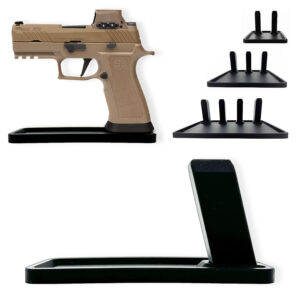

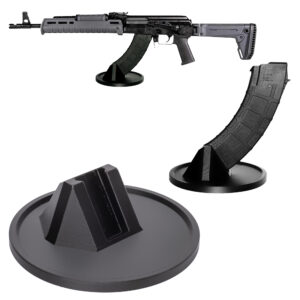

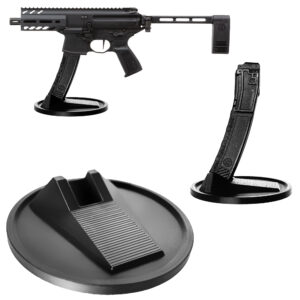
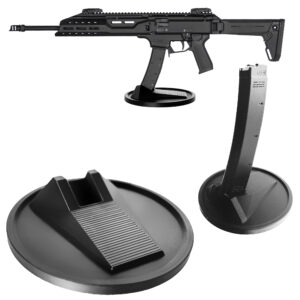

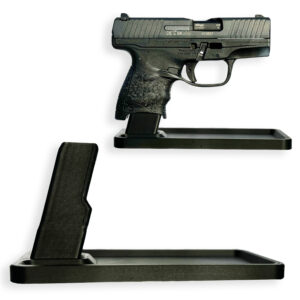
Colt
Colt M4 Carbine
Colt LE6920
Colt AR-15 A4
Daniel Defense
DDM4 V7
DDM4 V9
DDM4 V11
DDM4 ISR (Integrally Suppressed Rifle)
Smith & Wesson (S&W)
M&P15 Sport II
M&P15 Tactical
M&P15T
Bravo Company Manufacturing (BCM)
BCM Recce-16
BCM Recce-14
BCM MCMR Series
Aero Precision
M4E1 Series
AC-15
AR15 Pistol (Various Configurations)
Ruger
Ruger AR-556
Ruger SR-556
Ruger AR-556 MPR (Multi-Purpose Rifle)
Springfield Armory
Saint Victor
Saint Edge
Saint AR-15
PSA (Palmetto State Armory)
PSA PA-15
PSA AR-V
PSA Jakl (AR Pistol)
FN America
FN 15 Tactical Carbine
FN 15 Patrol
FN 15 DMR
Wilson Combat
Recon Tactical
Super Sniper
Protector Carbine
SIG Sauer
SIG M400 Tread
SIG M400 Elite
SIG M400 SDI
LWRC International
IC DI (Direct Impingement)
IC SPR
IC A5
Bushmaster Guns
XM-15 QRC
Bushmaster MOE
XM-15 Patrolman
Rock River Arms
LAR-15 Entry Tactical
LAR-15 Predator
LAR-15 Elite Comp
Stag Arms
Stag 15 Tactical
Stag 15L (Left-Handed Models)
Stag 15 Valkyrie
Noveske Rifleworks
Noveske Gen 4 N4
Noveske Space Invader (AR Pistol)
Noveske Recon
Anderson Manufacturing
AM-15 Optic Ready
AM-15 M4 Carbine
AM-15 Precision Rifle
Adams Arms
AA-15 Piston Rifle
P2 AARS (Adams Arms Rifle Series)
Black Rain Ordnance
SPEC15 Series
BRO Predator
Fallout 15
Diamondback Guns
DB15 Series
DB15CCMLB
DB15EB
Del-Ton Inc.
DTI-15
Del-Ton Echo 316H
Sierra 316M
Windham Weaponry
Windham SRC
Windham VEX-SS
Windham RMCS-4 (Caliber Conversion System)
Christensen Arms
CA-15 G2
CA-15 Recon
CA-15 Titanium Edition
Patriot Ordnance Factory (POF-USA)
Renegade Plus
P415 Edge
Revolution DI
LaRue Tactical
PredatAR
OBR (Optimized Battle Rifle)
LaRue Stealth 2.0
Battle Arms Development
Workhorse Patrol Carbine
BAD556-LW (Lightweight)
Authority Elite Rifle
Faxon Guns
Ascent AR-15
FX-19 (AR Pistol)
Streamline Ultralight Series
KE Arms
KE-15 SLT (Super Lightweight Tactical)
KE-15 Scout Carbine
Primary Weapons Systems (PWS)
MK1 MOD 2-M
MK116 PRO
MK107 (Piston AR Pistol)
ZEV Technologies
ZEV Core Elite Rifle
ZEV AR15 Billet Rifles
Franklin Armory
BFSIII AR-C1
Militia Model
F17-L (Chambered in .17 WSM)
Seekins Precision
SP15 DMR
NX15 Skeletonized Rifle
Havak Bravo
Aero Precision (Additional Models)
EPC-9 (Pistol Caliber ARs)
VG6 AR Rifles
Barrett Guns
REC7 DI
REC7 Gen II
CMMG
MK4 RCE
Resolute 300
Banshee (AR Pistol)
DPMS Panther Arms
Panther Oracle
Panther LR-308
H&K (Heckler & Koch)
HK MR556A1
HK416 (Military Variant)
Rock Island Armory (Armscor)
VR-80 Tactical AR (Shotgun AR Platform)
Troy Industries
Troy SPC-A3
Troy PAR (Pump Action AR)
Wilson Tactical
Tactical Recon AR
Protector Series
F1 Guns
FDR-15 Skeletonized Rifle
BDRx-15 Series
Juggernaut Tactical
JT-15
JT-10 Precision Rifle
AeroSurplus
Surplus AR-15 Rifles (Budget Models)
Thunder Tactical
AR-15 Basic Carbine
Tactical Builder Sets
Radical Guns
RF-15
Forged AR-Series
Dark Storm Industries
DS-15 Featureless Rifles
DS-10 Typhoon
DRD Tactical
Paratus
Aptus AR Rifles
Bear Creek Arsenal
BCA-15
AR Complete Upper Builds
Aero Survival Rifles (ASI)
ASR Tactical Series
Tactical Edge
WARFIGHTER Series
AR-15 Lightweight Rifles
Lone Star Armory
TX15 DMR
TX15 Carbine
HERA Arms
HERA H7
HERA AR-15 Lower Builds
IWI (Israeli Weapon Industries)
Zion-15
DRD Tactical
Tactical Modular Rifles
Quick-Takedown Rifles
V Seven Weapons
1776 Rifle
Hyperlite Rifle
Core Rifle Systems
Core15 Tac III
Core15 Patrol Rifle
Armalite (Original AR-15 Creator)
M15 Tactical
M15 A4 Carbine
DEF15 (Defensive Sporting Rifle Series)
PSA (Palmetto State Armory Additional Models)
PSAK-47 Hybrid (AR-AK Style Hybrid)
PSA Dagger (Pistol Caliber Configurations)
Odin Works
OTR-15
Odin Recon Rifle
Maxim Defense
MDX-508 PDX (Compact AR Pistol)
MDX-510 Rifle